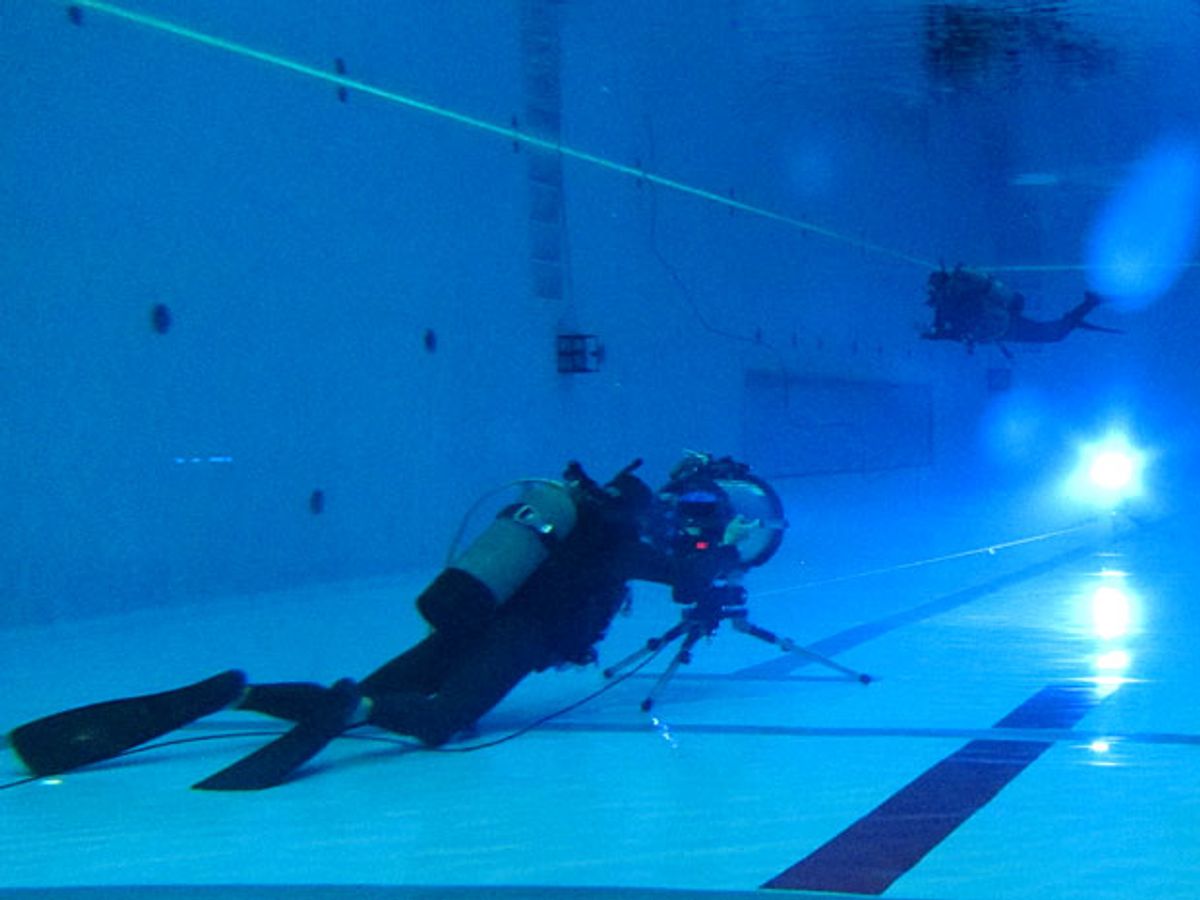Japan’s public broadcaster Nippon Hoso Kyokai (NHK) wants to broadcast live TV from under the water, but it’s been tripped up by that pesky cable that transfers the camera’s data to the surface. So engineers there are developing an underwater wireless transmission system that uses visible light from LEDs as the method of transmission. Their goal is to enable wireless live underwater TV broadcasting.
The system employs the Internet Protocol and uses a new scheme to control video transmission rates and error correction specially suited for the underwater environment.
Uncompressed video from an underwater camera is fed by cable to a waterproof casket containing the transmission equipment. An encoder compresses and encodes the video into IP packets, which, together with error correction data, are sent to an electrical to optical converter. The converter drives an LED module of 16 blue LEDs, turning it on and off to transmit the data to a converter located in the receiver’s waterproof casket. The received data is converted back into uncompressed video and sent via a cable to a monitor on land or a ship.
Photo: NHK
“We chose LEDs because of their low cost, and because attenuation of blue light in clear water is relatively low,” says Yosuke Endo, a senior research engineer at NHK. “Though sonic waves have less attenuation, the bandwidth is narrower.”
In the event of a signal disruption, the new error correction system, adaptive transmission rate control (ATRC), kicks in. It uses an industry-standard video buffer delay of about one second to ensure any missed video frames are given priority for retransmission. ATRC does this by lowering the normal video transmission and correction data rates to provide wider bandwidth for the resent data. ATRC optimizes bandwidth allocation intelligently and utilizes the 1-second buffer delay to ensure that though the resent data is given priority, normal video transmission is not disrupted.
Tests held in a swimming pool indicate the system can work up to an estimated 100 meters. During testing, the “beer keg” sized caskets proved cumbersome to use and the system was overpowered for its intended early applications like broadcasting swimming events. A second-generation system under development will use a flashlight-sized blue LED module that’s good for up to 30 meters; this will enable the casket size to be shrunk by about half.
“We plan to field-test the new system this year, probably in an aquarium,” says Endo. “We see the technology being used to broadcast live swimming races from the bottom of the pool, monitor large aquariums, shoot underwater nature programs, and maybe for scientific research.”




